Seiken Psycho Calibur (聖剣サイコカリバー 魔獣の森伝説), released 5/19/1987, developed and published by Imagineer
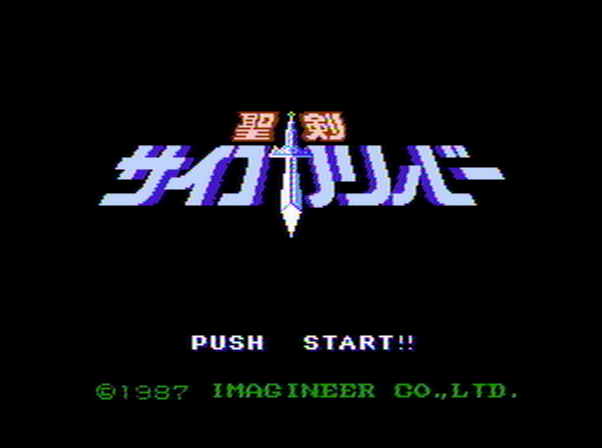
This is the third game in Imagineer’s “Wave Jack” series. The first game (Ginga Densetsu) was a hybrid shooter/adventure game (like The Guardian Legend), and the second game (Kieta Princess) was an action game/mystery game hybrid. The unifying element of the games is that they came with booklets and audio cassettes that expanded on the background of the game and gave some clues to puzzles in the game. They also featured theme songs by a popular idol group at the time. The third (and last) Wave Jack game was Seiken Psycho Calibur, and it’s not hard to see what game they were influenced by:
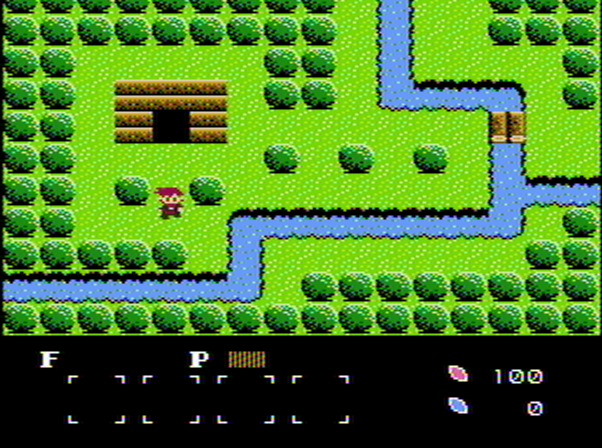
I think people are sometimes too quick to use the term “ripoff” — Zelda itself borrowed elements from Hydlide and Tower of Druaga, although of course it develops its own feel and system well beyond what those games had. SPC is more obviously based on Zelda, although it’s nowhere near as good of a game. I think it does enough things differently from Zelda that it’s not just a pure ripoff, but the accusation is probably justified.
The story is pretty basic, although perhaps the material included with the game expanded on it more — the story in game is just the usual “main character is the descendant of a legendary hero who beat the demon 300 years ago” setup.
Rather than the large map of Zelda, this game is separated into 9 areas, each with a boss. You start in an area where there are a number of houses with clues, some shops, and two training areas. You get 100 coins to start, and 200 total food (the red oval), which decreases as time passes. If it hits 0 you start losing HP. You also have two meters, P (which is hit points) and F (which is strength).
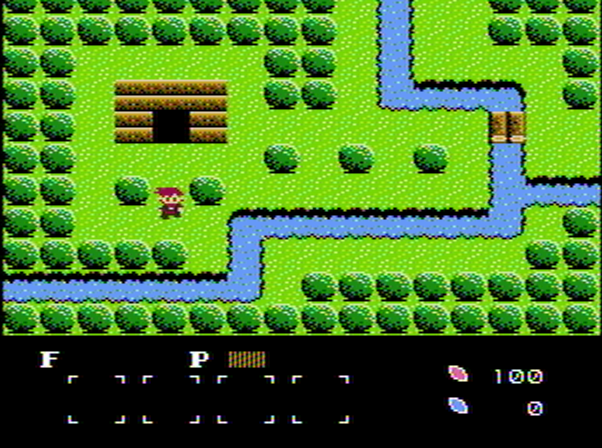
The starting area is interesting because you can never come back to it, so you are basically choosing a starting set of things with your 100 money. Some of the items will be available from other shops later, but the Clothes (which raise defense) are only available here. I went with the clothes, which are 80 coins — this means you can’t pay 50 coins to train your power or force, but it seemed reasonable. Once you’ve visited all these areas and chosen your starting stuff, it’s off to the first level.
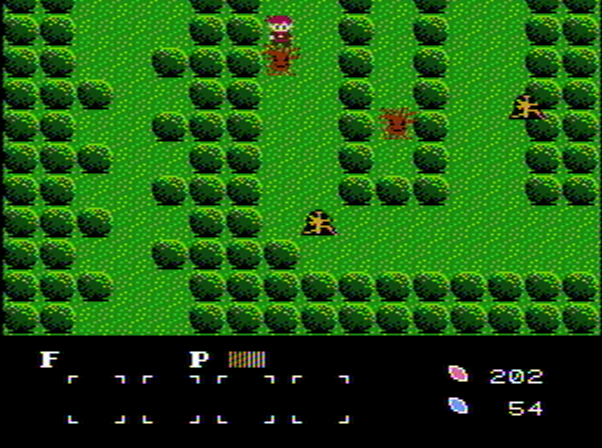
You wander around the levels, which are relatively small. Unlike Zelda there’s not much to find in each one — the first level has only three things of importance. There’s a shop that sells the Boomerang (essentially the same as Zelda except it actually does damage), 100 food, and Trent Fruit (bombs). There’s also a boss that drops a key, and then you can use the key to free the first of two fairies (which will go in one of the four boxes there below the Force and Power meters.
Beating the regular enemies will give you food and money, and occasionally things that will increase your hit points although I’m not 100% sure how that works. The Boomerang is a good weapon but 100 coins is a lot (nobody dropped more than 1 for me); you can return to old areas other than the starting area, so you wouldn’t have to buy it now.
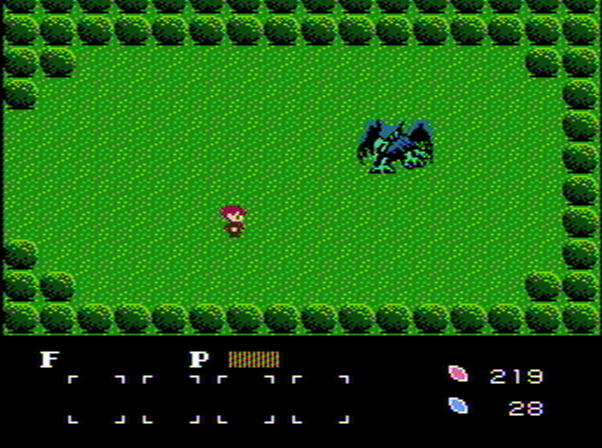
The first boss shoots out fireballs but is not too difficult. Beating him gives you the key.
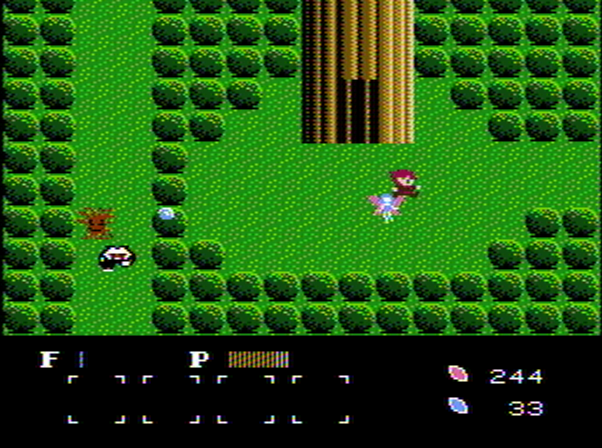
The fairy can be brought out to block 3 projectiles, and then it will disappear for a while to cool down. The other blocks are a second fairy, sword techniques (which you learn as your Force meter goes up), and the secondary items. The fairies and sword techniques are at least something different from Zelda.
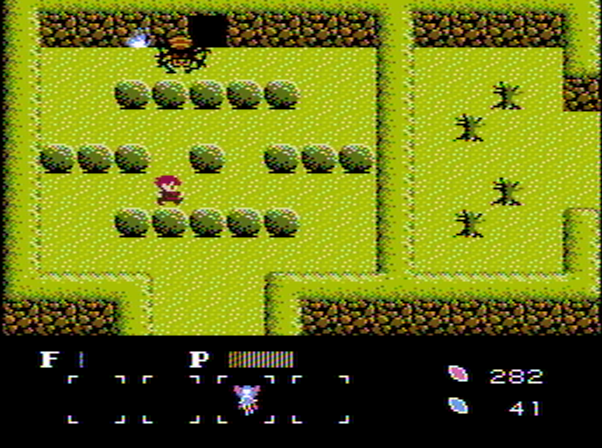
The second area has no shops or items, just this spider boss which drops a key; you need the key to go into an underground part of the level where you will find another boss. None of this is necessary to go to the next stage, but you need to raise your Force to learn the sword techniques, some of which are necessary to pass areas or fight bosses — you wouldn’t necessarily have to do it in the order given, but you would have to do them all eventually.
This is where I stopped. It’s a pretty bad game, especially under the shadow of Zelda. The control feels stiff, and there are annoyances like not being able to use your sword when you first enter a level.
Apparently the purpose of the included cassette tape is to give you clues to getting through the Lost Woods (another Zelda influence) on the final map; you have to go in a way that forms the theme song which you can hear on the tape.
I’m not sure why Imagineer didn’t make any more Wave Jack games, but I have a feeling it just wasn’t worth it to include all these extras in the game — from what I can see the price (4900 yen) was on the expensive side but not an unusual price for a Famicom game. So they were probably not making as much money as they could have and I doubt the extras were a big draw for the game (especially since all three games got lukewarm or negative reviews even at the time).
I also played Deep Dungeon 2, so I will do a post about that midweek and then next Saturday I will post about Tokyo Majin Gakuen.